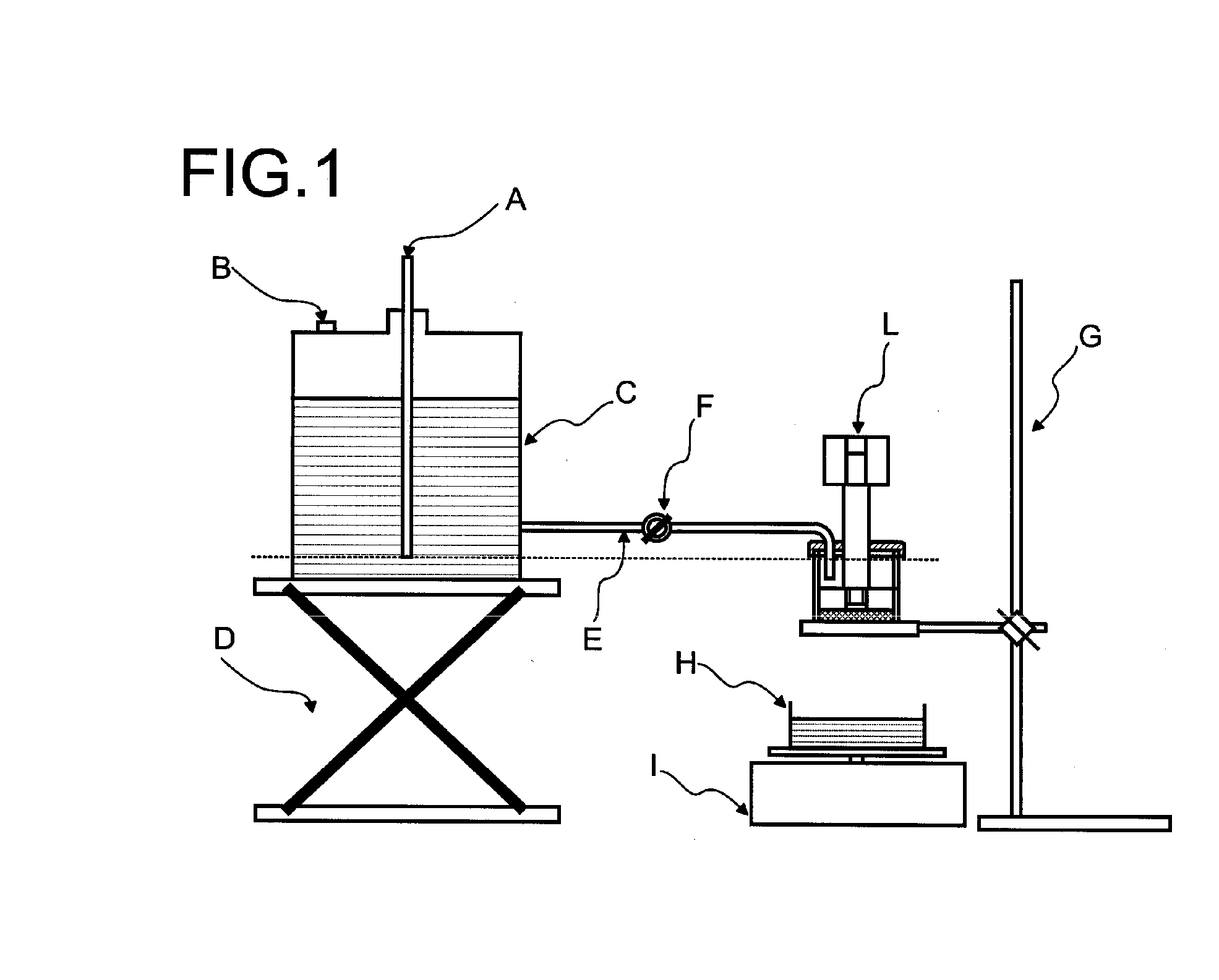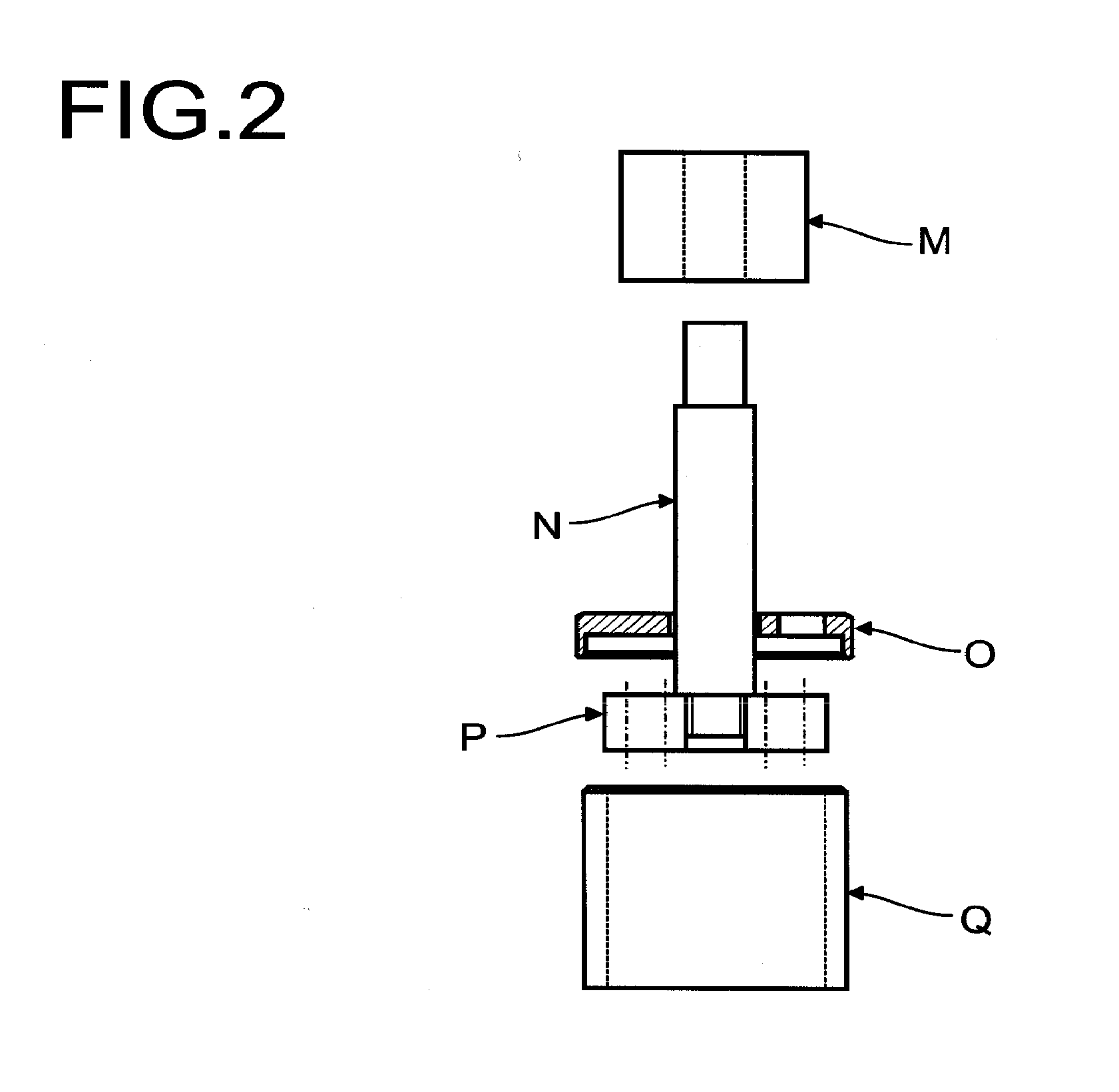Absorbent Structures With Coated Water-Absorbing Material
- Summary
- Abstract
- Description
- Claims
- Application Information
AI Technical Summary
Benefits of technology
Problems solved by technology
Method used
Image
Examples
example 1
Synthesis of the Base Polymer
[0280]A Loedige VT 5R-MK plowshare kneader of 51 capacity was charged with 206.5 g of deionized water, 271.6 g of acrylic acid, 2115.6 g of 37.3 wt.-% sodium acrylate solution (100 mole % neutralized) and 3.5 g of a threefold ethoxylated glycerol triacrylate crosslinker and inertized by bubbling nitrogen through it for 20 minutes. This was followed by the addition of dilute aqueous solutions of 2.453 g of sodium persulfate (dissolved in 13.9 g of water), 0.053 g of ascorbic acid (dissolved in 10.46 g of water) and also 0.146 g of 30% by weight hydrogen peroxide (dissolved in 1.31 g of water) to initiate the polymerization at about 20° C. After initiation, the temperature of the heating jacket was controlled in order to monitor the temperature inside the reactor. The temperature was kept below 90° C. The obtained crumbly gel was dried in a circulating air drying cabinet at 160° C. for about 3 hours. The dried base polymer was subjected to milling and clas...
example 2
Post-Crosslinking
[0281]A post-crosslinking solution was used which contained in water / isopropanol (69.1 / 30.9):
[0282]0.14 wt.-% of a solution (50 wt.-%) of 2-hydroxyethyl oxazolidinone in 1,3-propanediol
[0283]0.7 wt.-% 1,2-propanediol
[0284]50 ppm (based on polymer) of sorbitan monooleate (2 wt.-% solution in water)
[0285]A Loedige VT 5R-MK plowshare kneader was charged with 1200 g of the base polymer and heated to a product temperature of 185° C. Subsequently, 4.55 wt.-% (based on polymer) of the post-crosslinking solution was sprayed on the polymer by means of nitrogen (0.5 bar) at 185° C. and a rotating speed of 200 rpm using a 2-fluid nozzle. After the spray-coating the mixing was continued for 40 minutes. The obtained product was classified to 710 μm and is designated as precursor.
example 3
Reference Example
[0286]Coating of the Precursor:
[0287]In a cylindric fluidized bed (diameter of 150 mm having a sparger plate with 2 mm orifices) 2000 g of the precursor were coated with a mixture of 52.6 g of 37 wt.-% polyurethane dispersion (Astacin® Finish PUMN TF) and 47.4 g of water at 35° C. Subsequently, the coated precursor was coated in the same fluidized bed under the same conditions with a mixture of 20 g Levasil, 50 / 50 (15 wt.-% of a silica dispersion) and 30 g of water. A Loedige M5 plowshare mixer M5 was then charged with 1200 g of the obtained coated precursor and then heated to 180° C. product temperature and kept for 20 minutes. The obtained product is the reference sample.
[0288]After cooling the following parameters were determined:
[0289]FHA: 3.8 g / g
[0290]FSR: 0.14 g / g·s
[0291]CS-FSC: 410·10−7 cm3s / g.
PUM
| Property | Measurement | Unit |
|---|---|---|
| Temperature | aaaaa | aaaaa |
| Temperature | aaaaa | aaaaa |
| Temperature | aaaaa | aaaaa |
Abstract
Description
Claims
Application Information
 Login to View More
Login to View More - R&D
- Intellectual Property
- Life Sciences
- Materials
- Tech Scout
- Unparalleled Data Quality
- Higher Quality Content
- 60% Fewer Hallucinations
Browse by: Latest US Patents, China's latest patents, Technical Efficacy Thesaurus, Application Domain, Technology Topic, Popular Technical Reports.
© 2025 PatSnap. All rights reserved.Legal|Privacy policy|Modern Slavery Act Transparency Statement|Sitemap|About US| Contact US: help@patsnap.com



